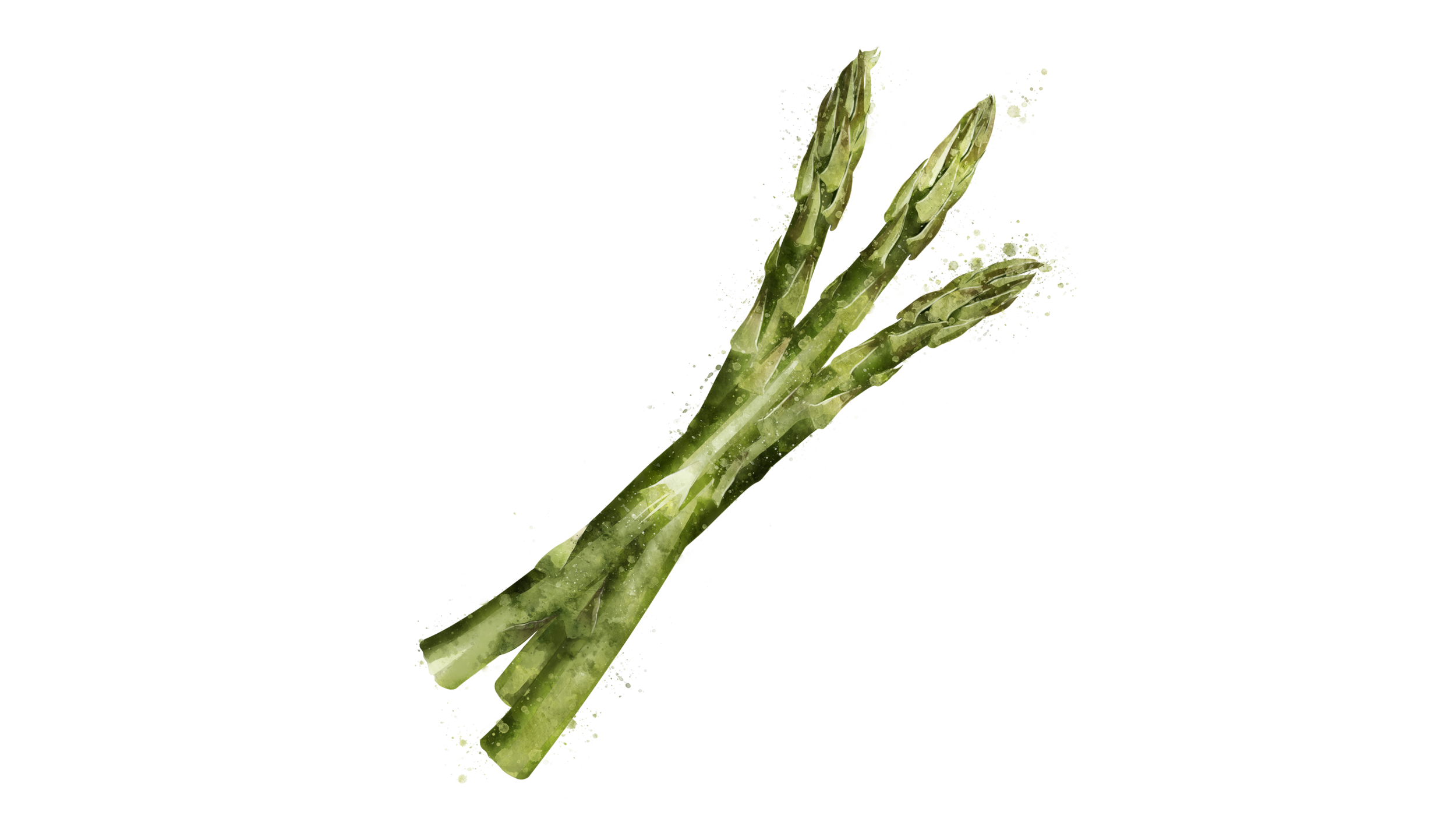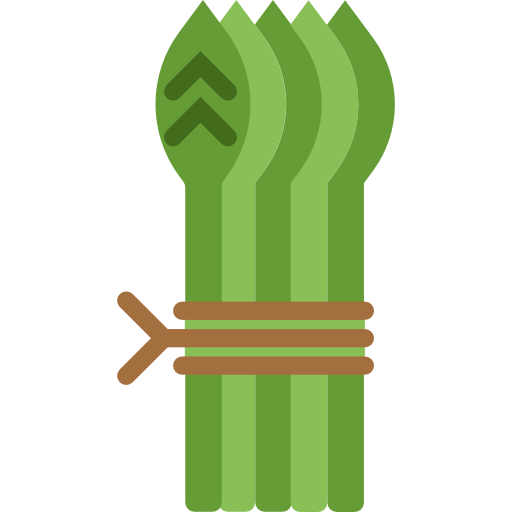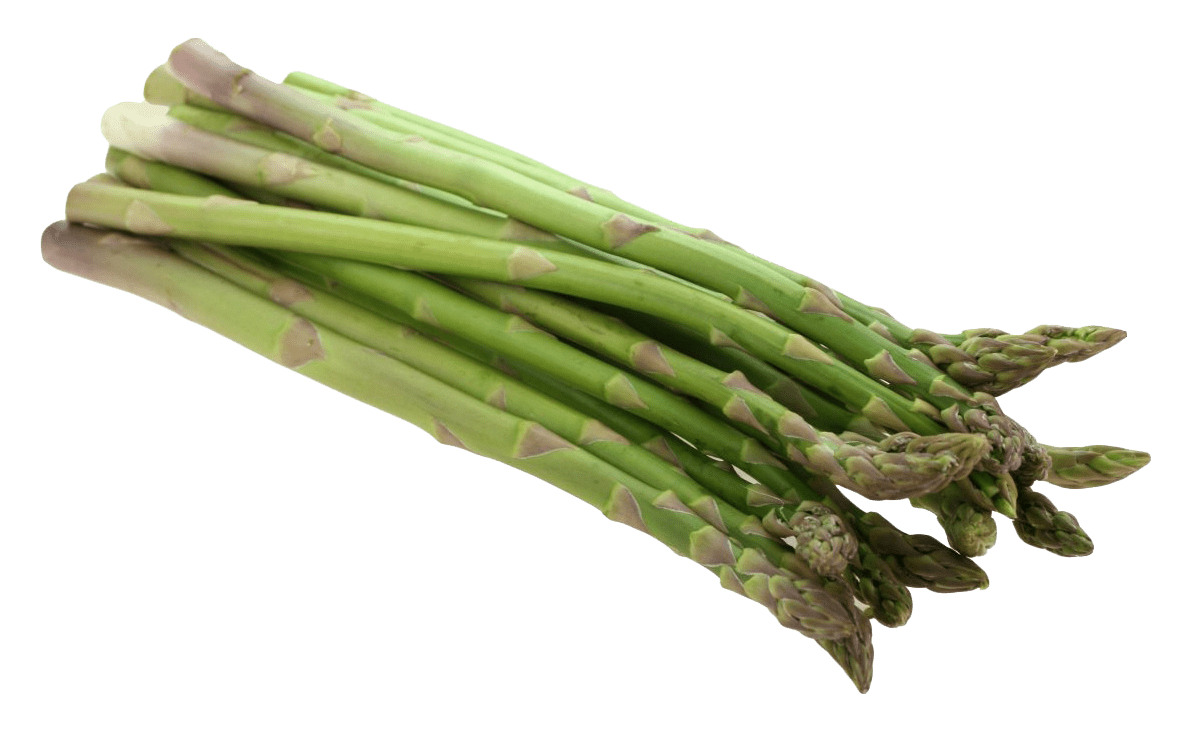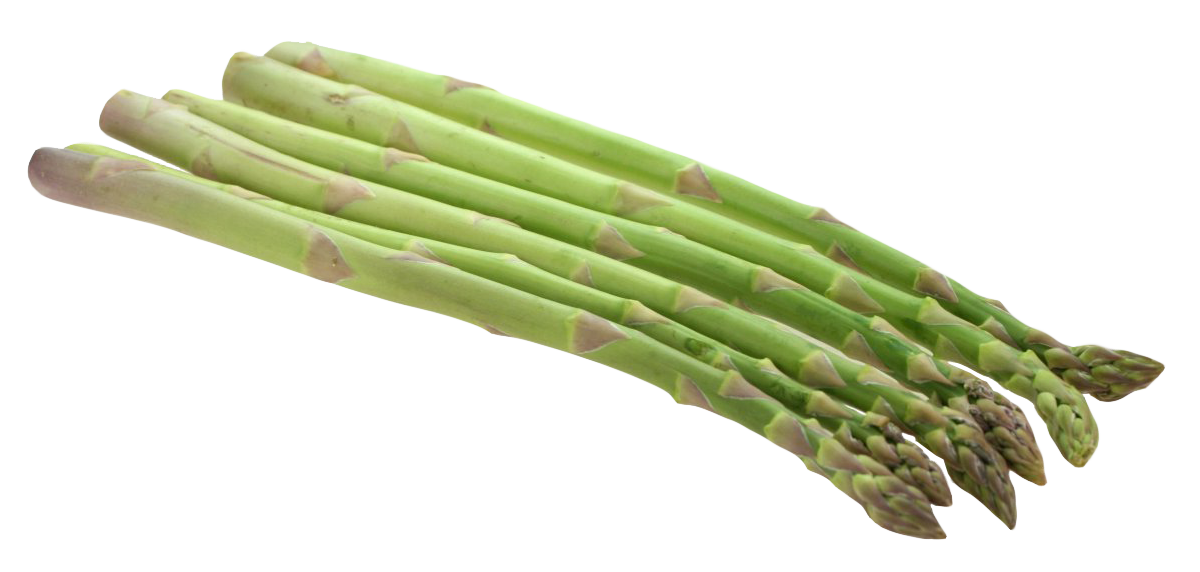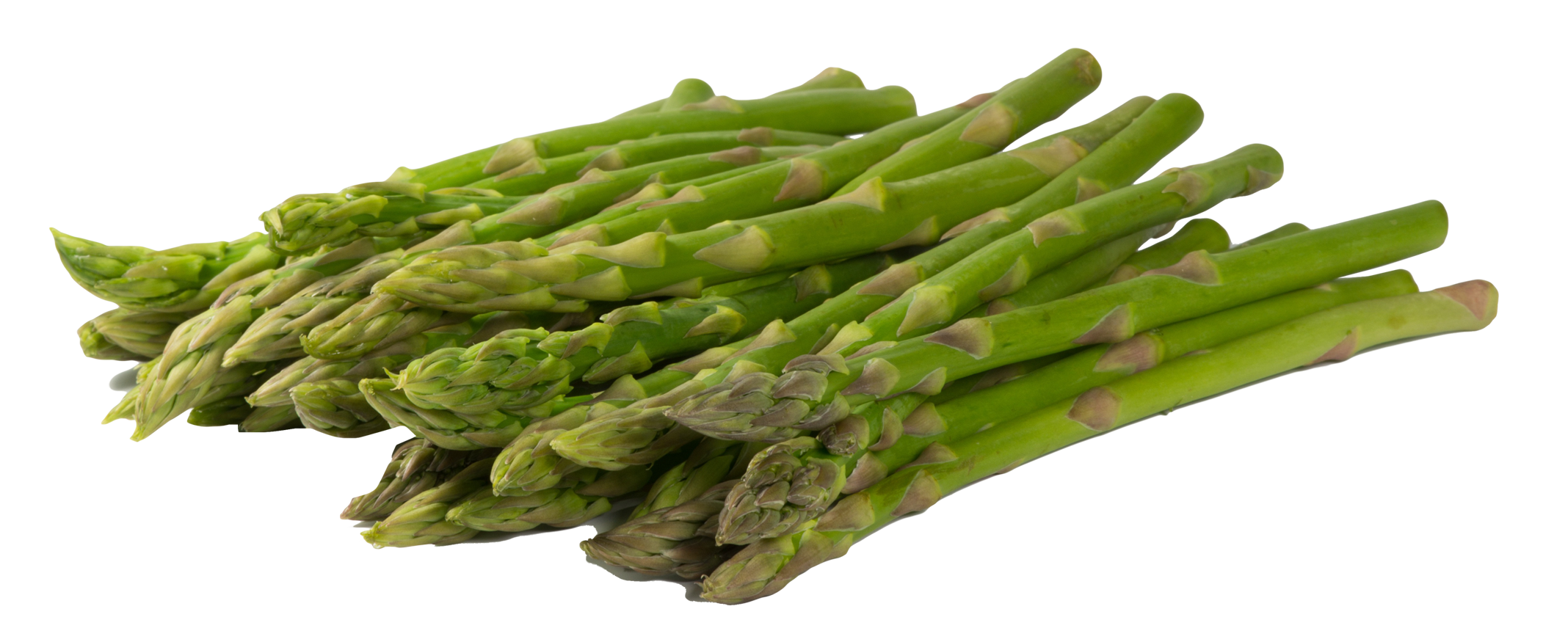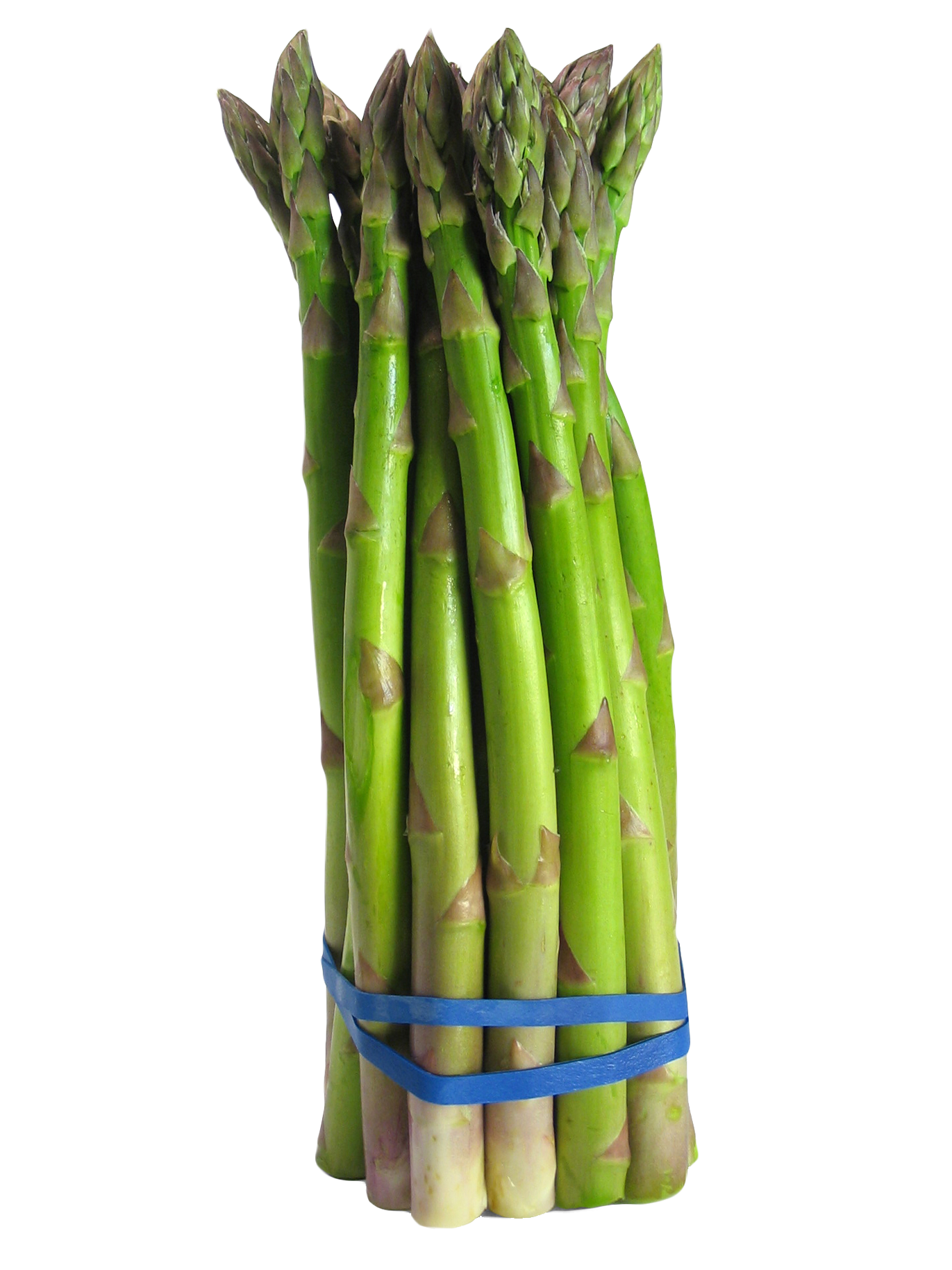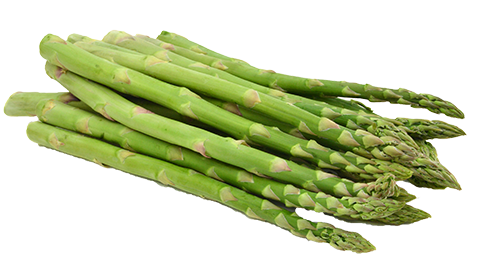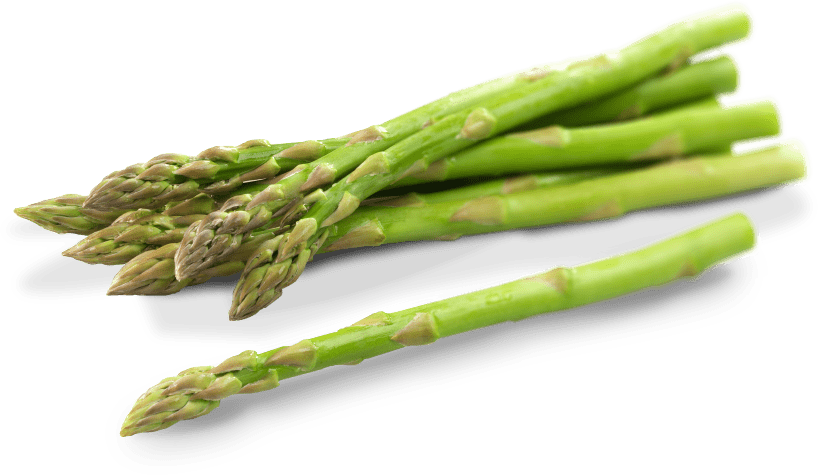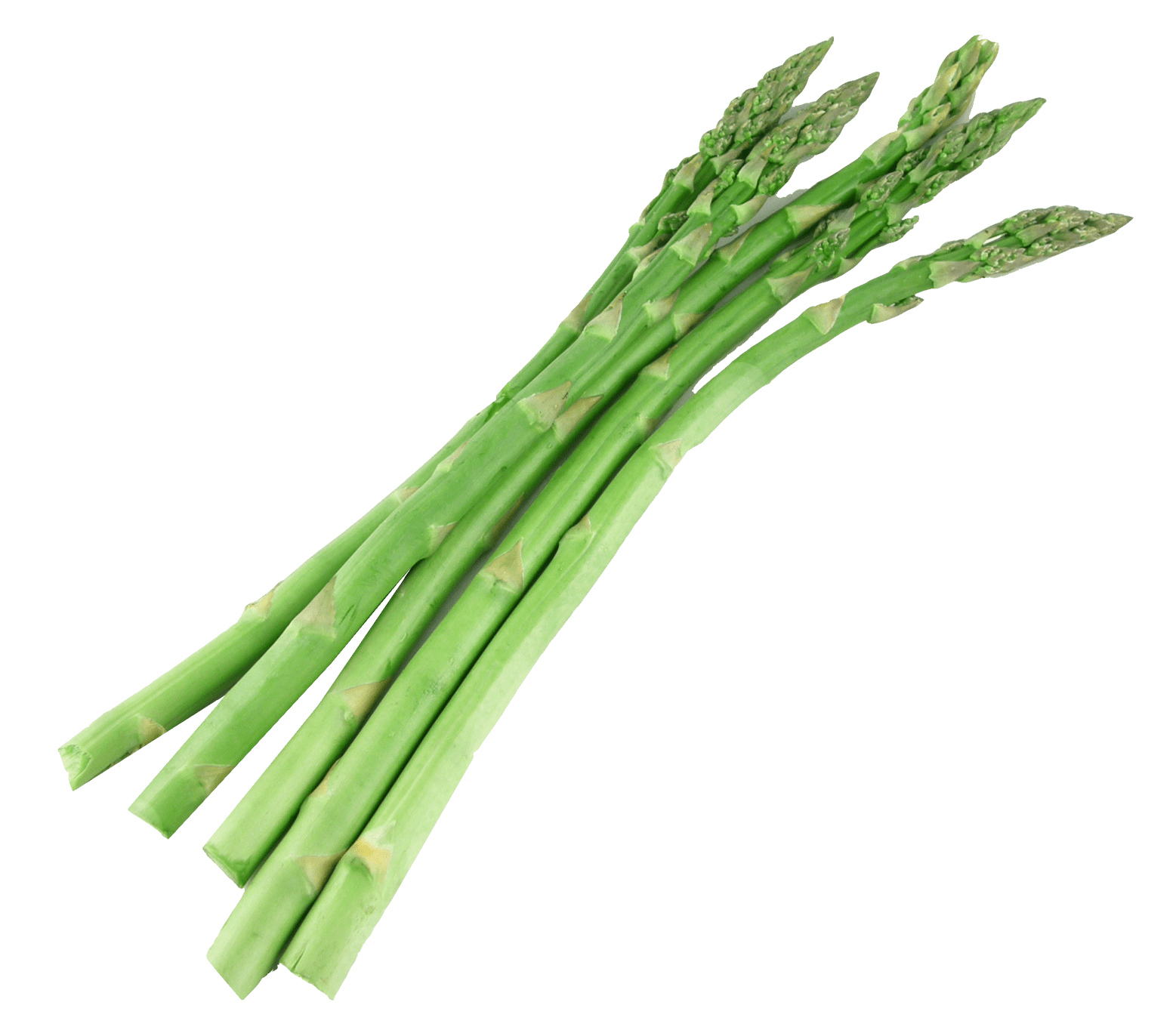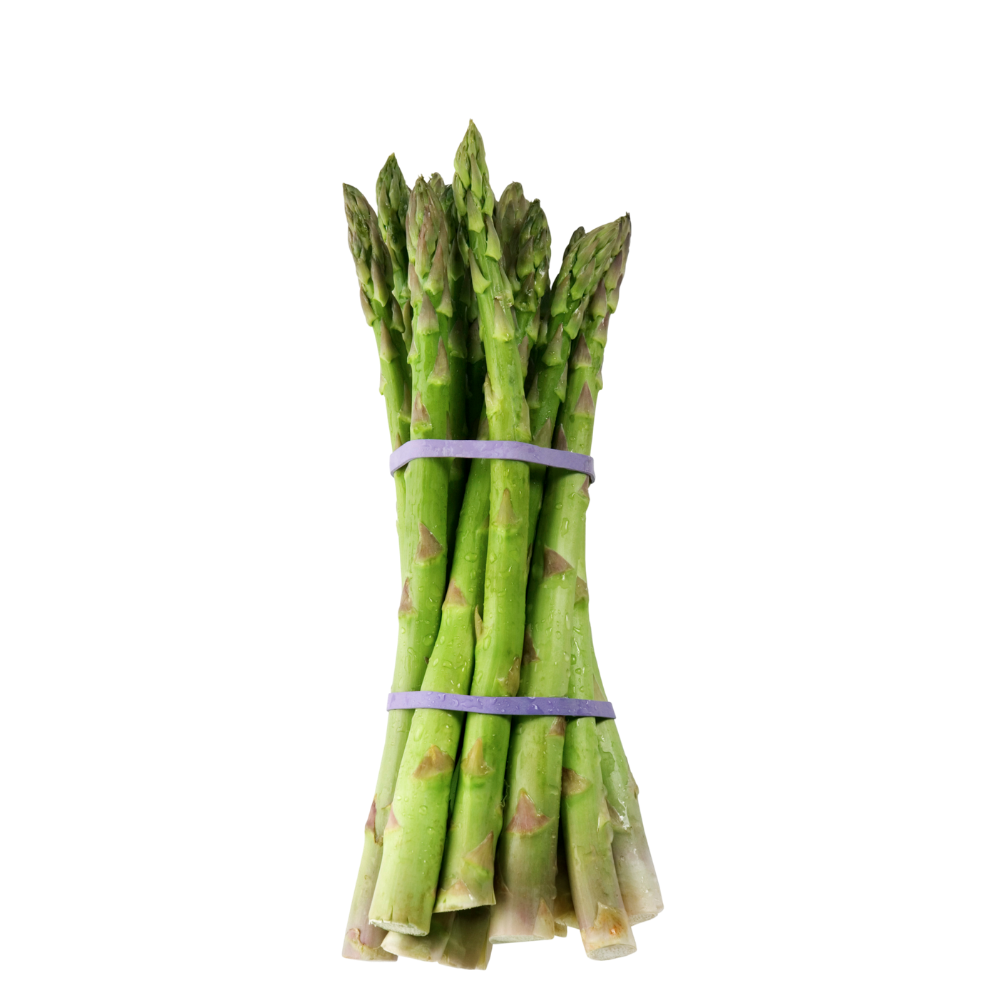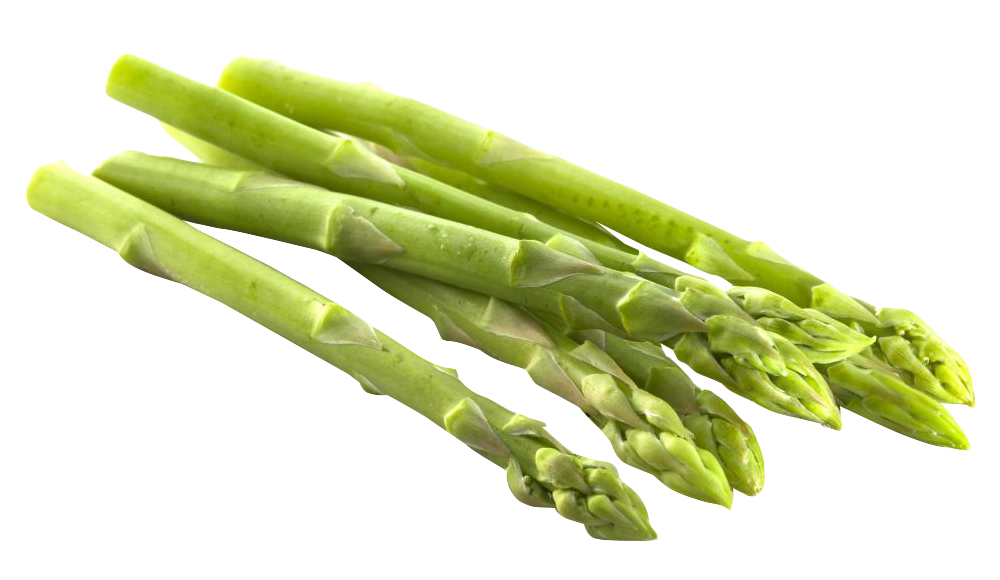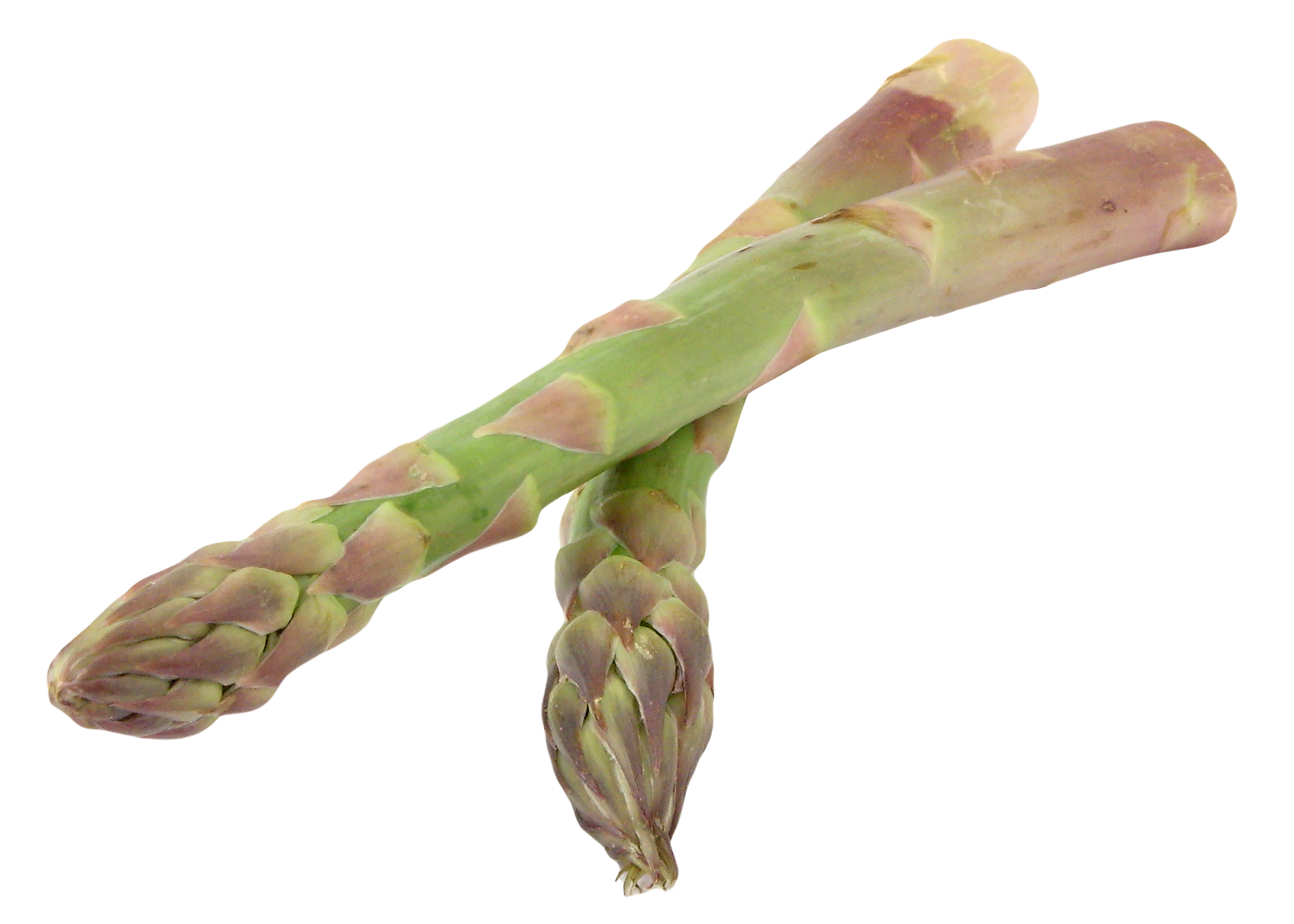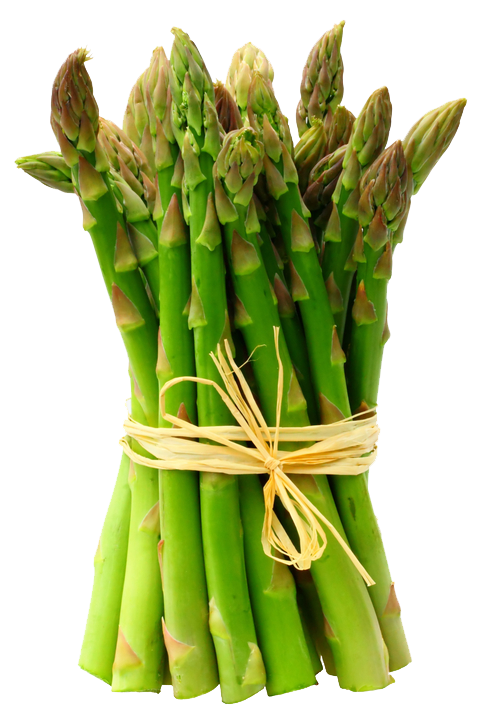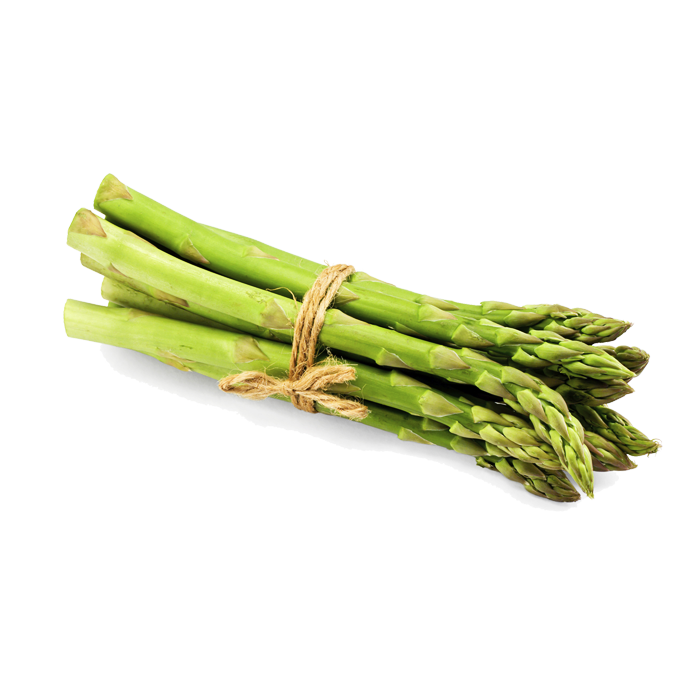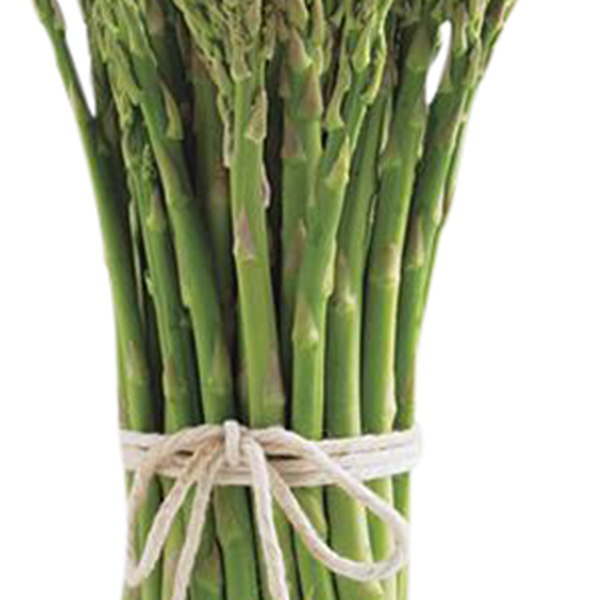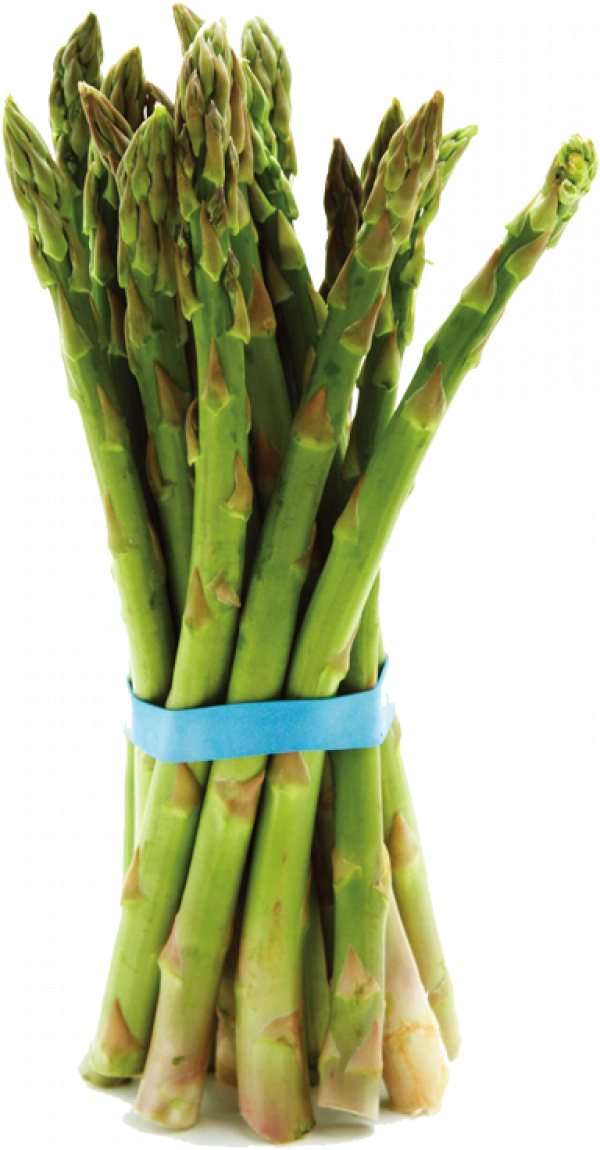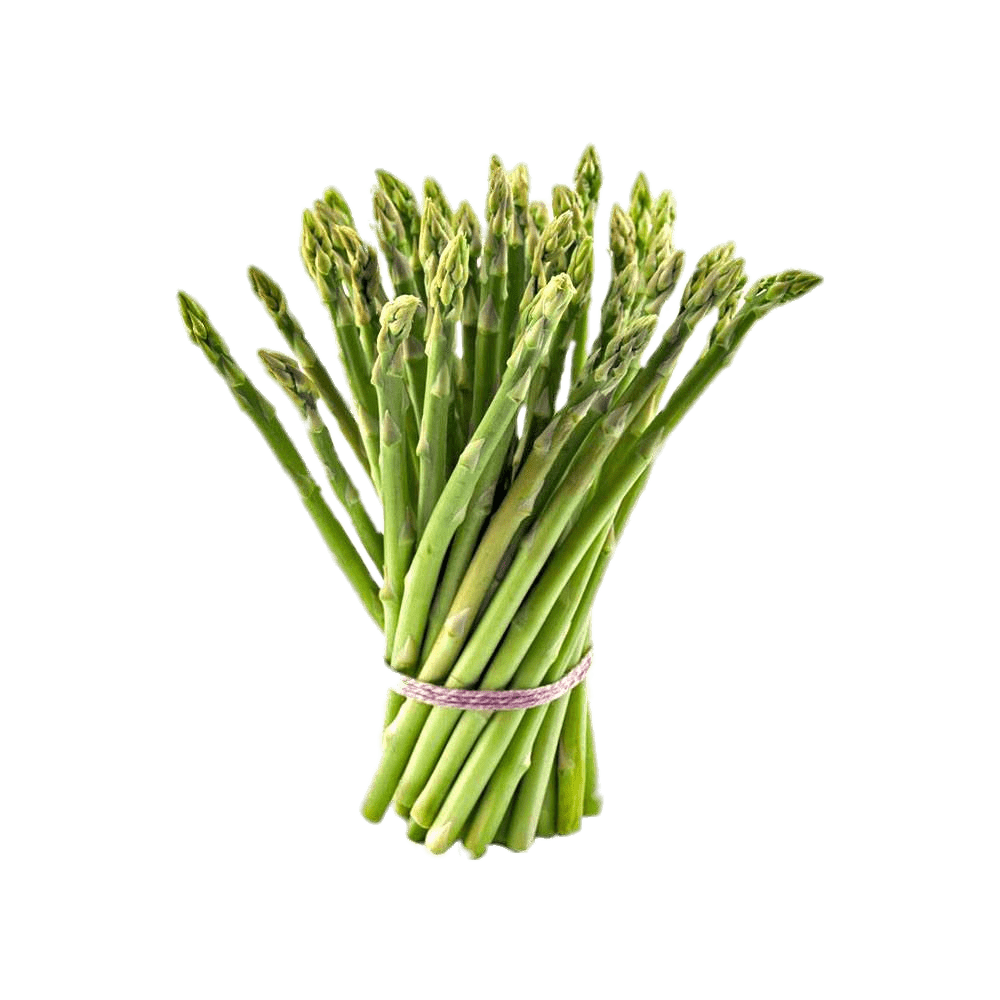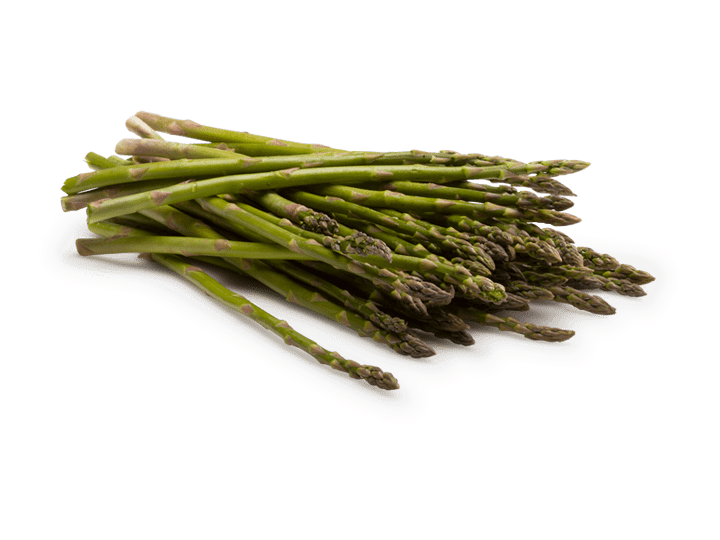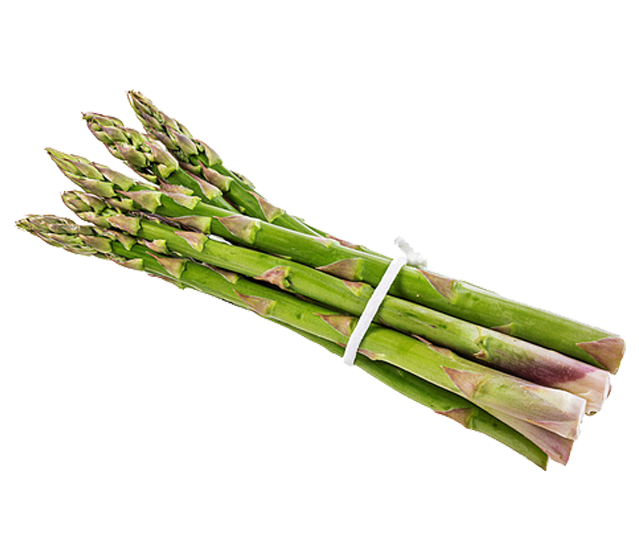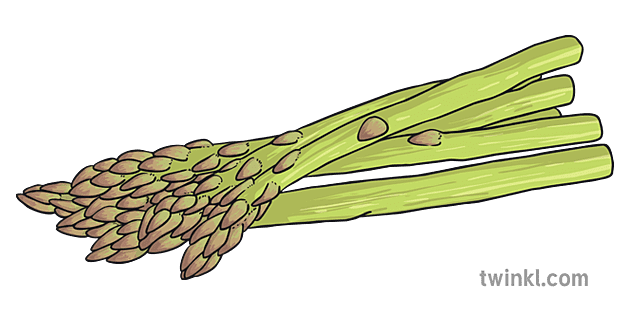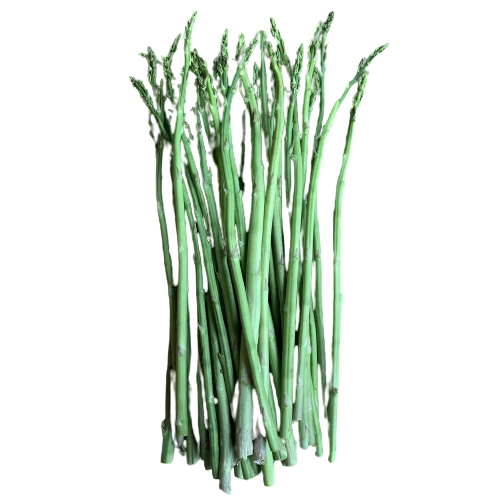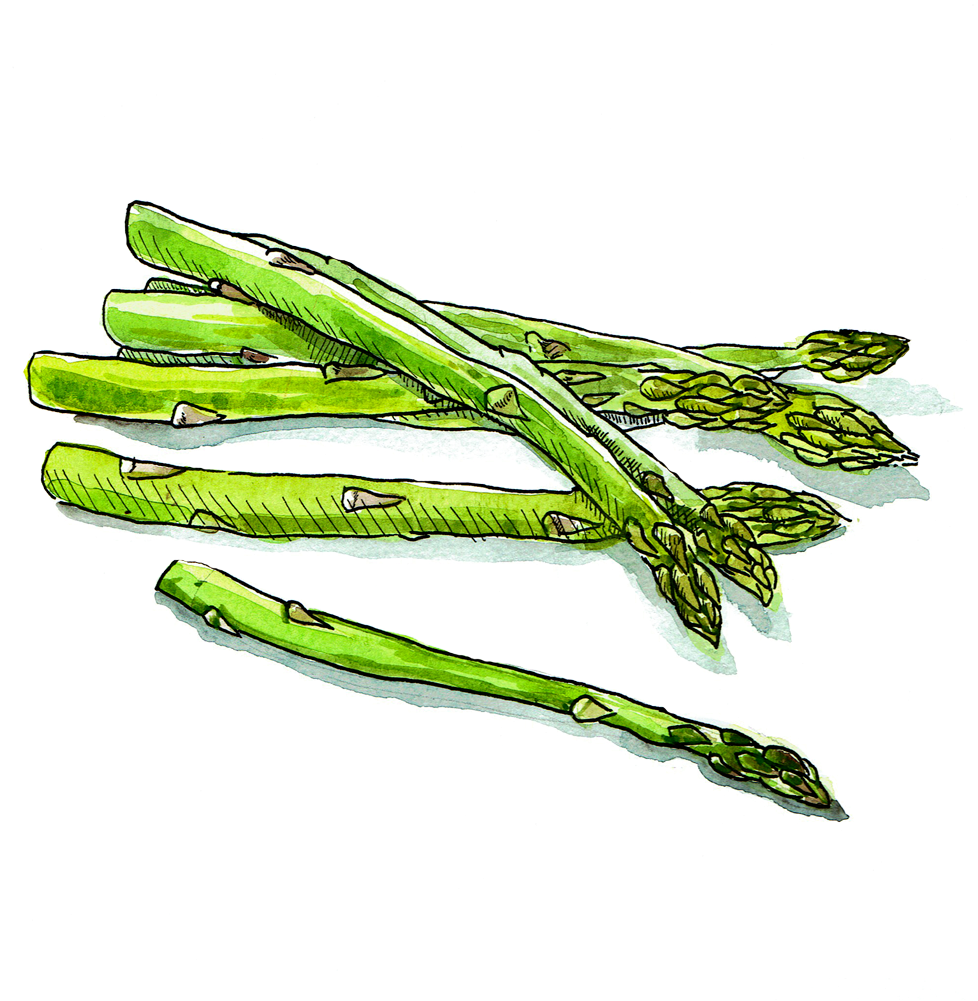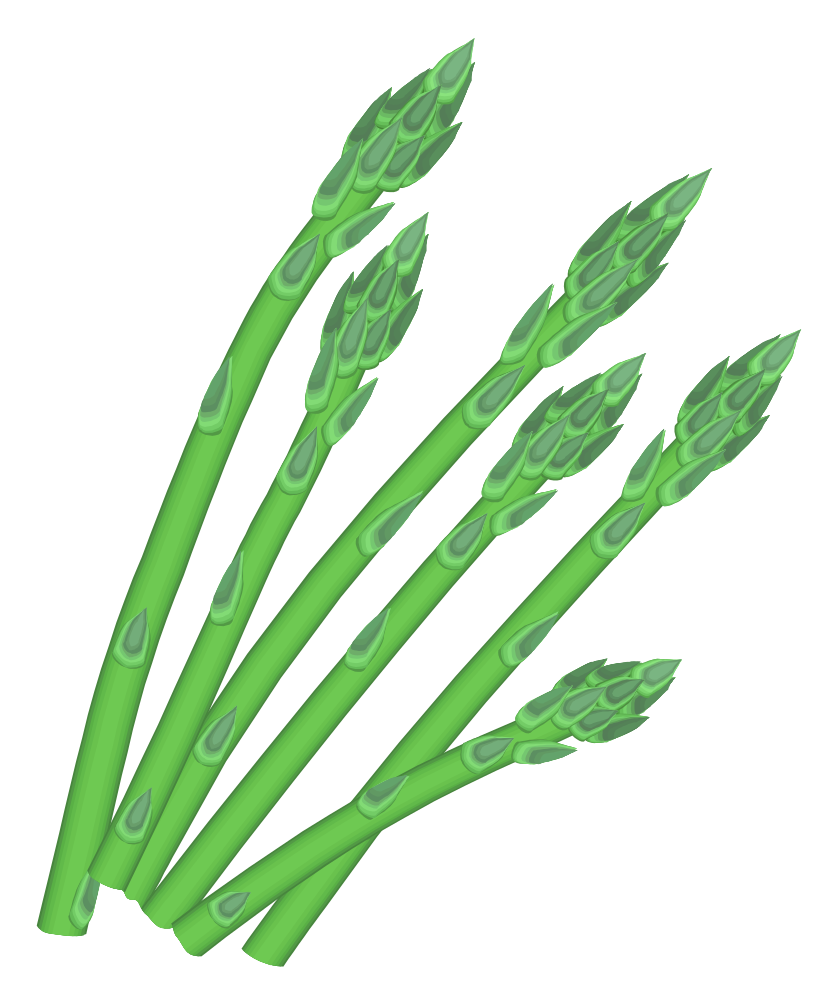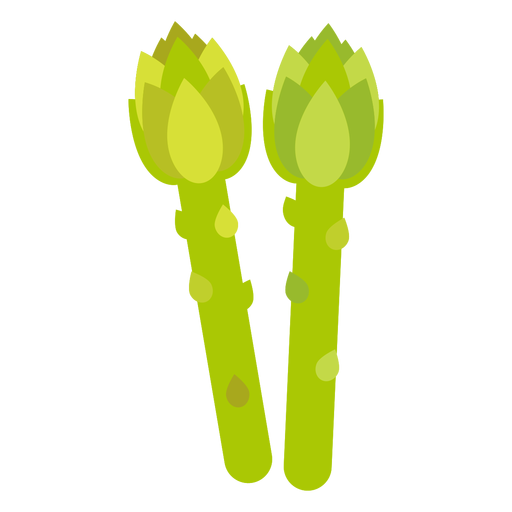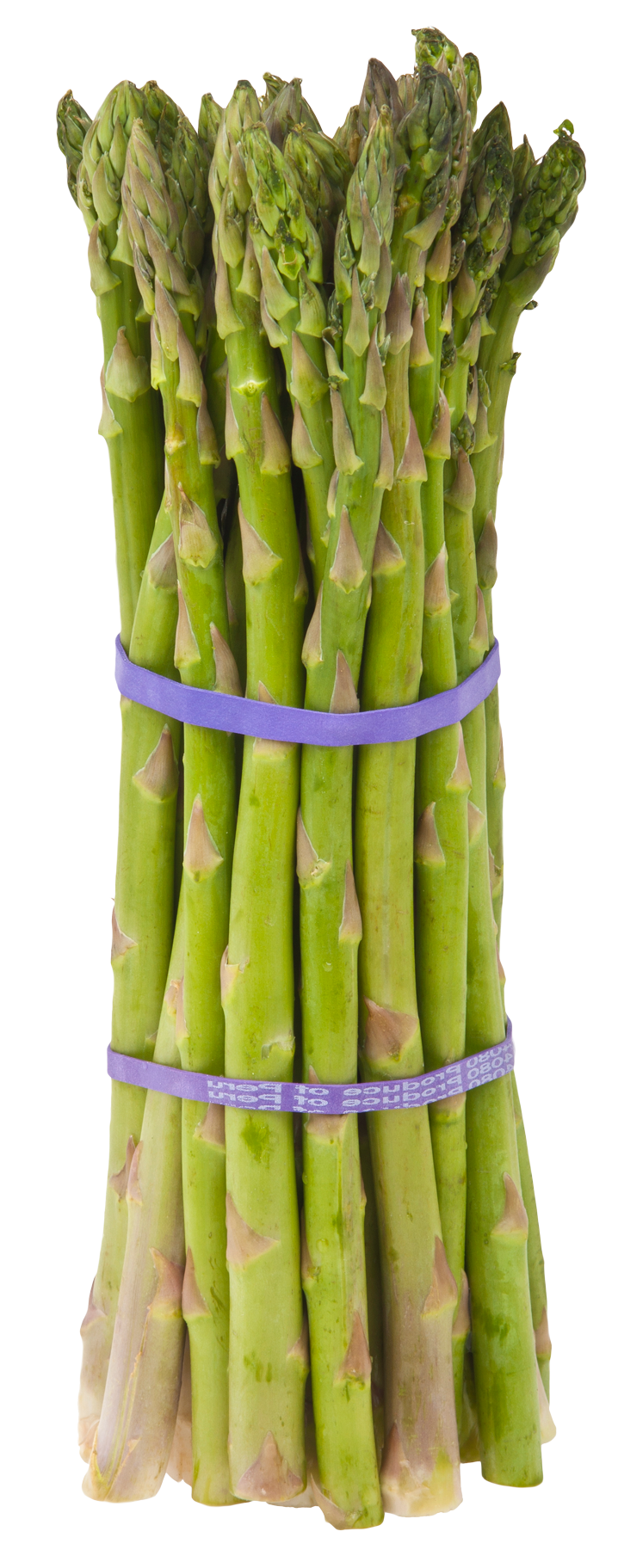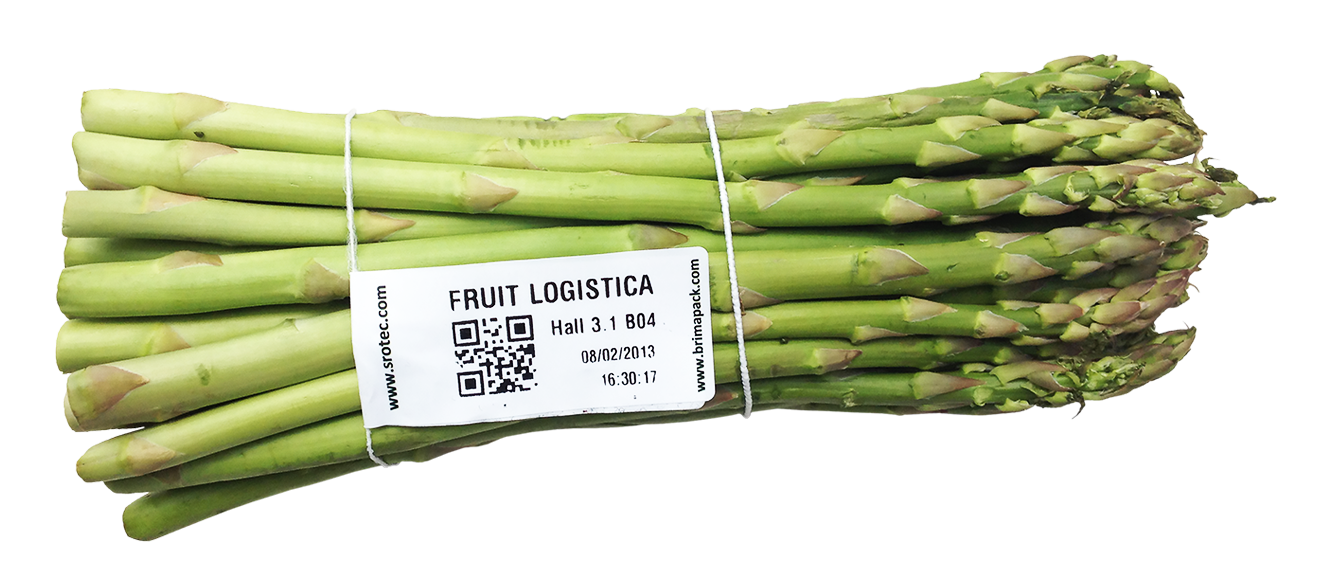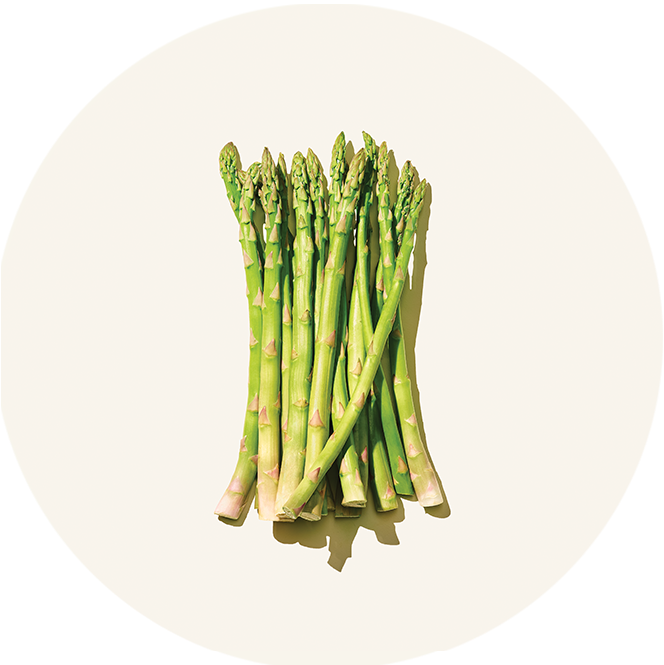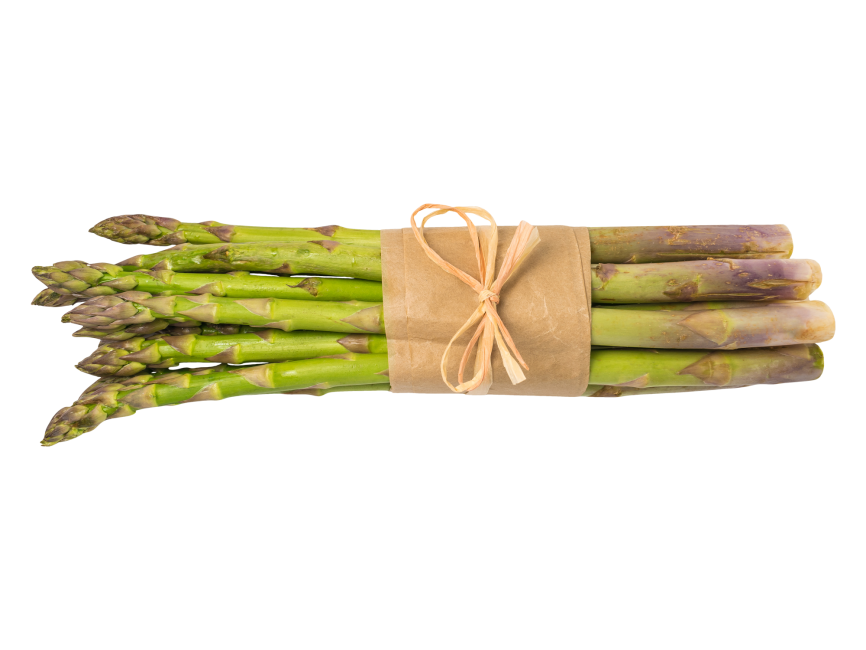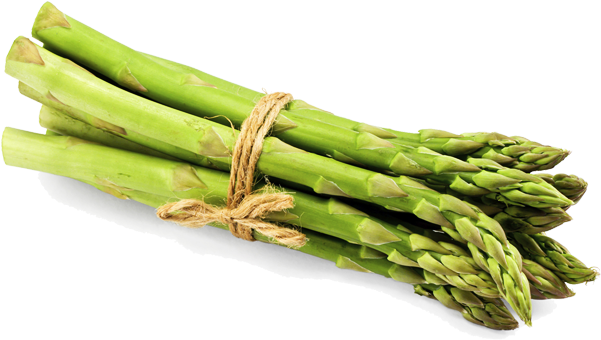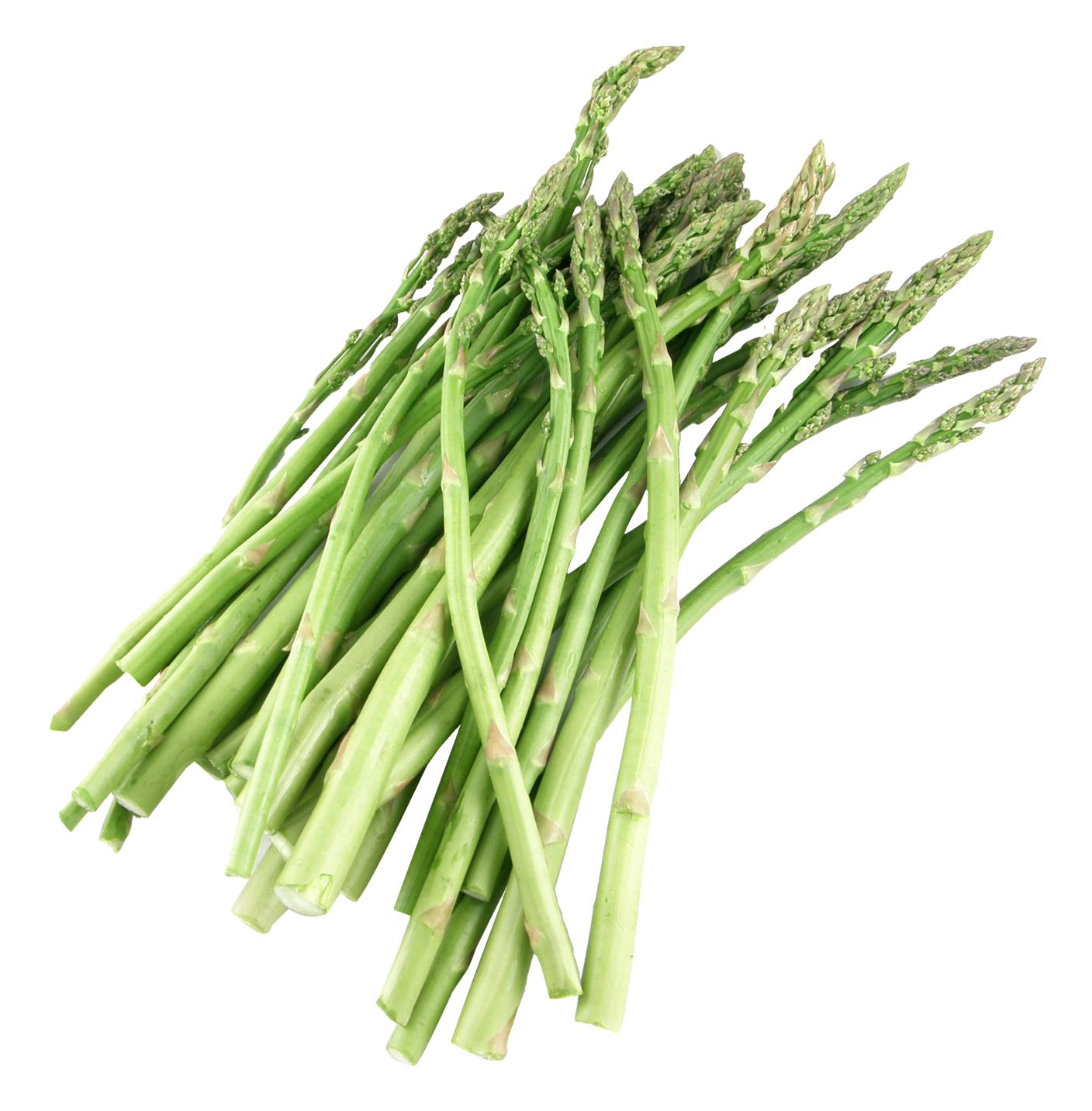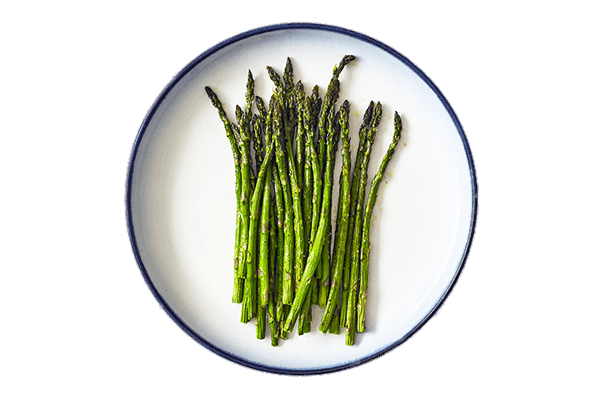Download top and best high-quality free Asparagus PNG Transparent Images backgrounds available in various sizes. To view the full PNG size resolution click on any of the below image thumbnail.
License Info: Creative Commons 4.0 BY-NC
Asparagus, sometimes known as garden asparagus or sparrow grass, is a perennial flowering plant species in the family Asparagus. Its scientific name is Asparagus officinalis. Its young shoots are eaten as a vegetable in the spring.
It was originally considered a member of the lily family, along with the allied Allium species that include onions and garlic. However, genetic research divides lilies, allium, and asparagus into three families: Liliaceae, Amaryllidaceae, and Asparagaceae, with the Amaryllidaceae and Asparagaceae classified together in the Asparagales order. The native range of Asparagus officinalis varies according to sources, although it typically includes much of Europe and western temperate Asia. As a vegetable crop, it is widely grown.
Asparagus is a perennial herbaceous plant with sturdy stems and fluffy leaves that grows to a height of 100″150 cm (40″60 in). The “leaves” are needle-like cladodes (modified stems) in the axils of scale leaves, measuring 6″32 mm (1″1+14) long and 1 mm (132 in) wide, grouped four to fifteen together in a rose-like form. The root system, sometimes known as a “crown,” is adventitious, with a fasciculated root type. The blooms are bell-shaped, greenish-white to yellowish, 4.5″6.5 mm (316″14 in) long, and have six tepals partly fused together at the base; they are produced individually or in clusters of two or three at branchlet intersections.
It is typically dioecious, having male and female blooms on different plants, however hermaphrodite flowers have been discovered on occasion. The fruit is a little red berry with a diameter of 6″10 mm (1″1332 in) that is harmful to humans.
Asparagus officinalis subsp. prostratus (Dumort.) Corb. is a low-growing, often prostrate Asparagus officinalis subsp. prostratus (Dumort.) Corb. with shorter cladodes 2″18 mm (332″2332 in) long stems native to the western coasts of Europe (from northern Spain to northwest Germany, north Ireland, and Great Britain). Some writers classify it as a separate species, Asparagus prostratus Dumort.
Because of its particular flavor, asparagus has been utilized as a vegetable as well as in medicine for its diuretic benefits and reputed aphrodisiac characteristics. On an Egyptian frieze from 3000 BC, it is depicted as an offering. It was also known in ancient times in Syria and Spain. When it was in season, the Greeks and Romans ate it fresh, then dried it for use in the winter.
For the Epicurean Feast, Roman Epicureans froze its sprouts high in the Alps. Emperor Augustus established the “Asparagus Fleet” to transport the produce, coining the phrase “faster than boiling asparagus” to describe its speed.
One of the oldest surviving collections of recipes (Apicius’ 1st century AD De re coquinaria, Book III) has a recipe for preparing asparagus. Asparagus was noted as a therapeutic herb by Galen, a highly regarded Greek physician in Roman culture, in the second century AD, but as the Roman empire declined, asparagus’ medical usefulness garnered little notice until al-The Nafzawi’s Perfumed Garden. The Indian Ananga Ranga credits its claimed aphrodisiacal ability to “unique phosphorous components,” which also fight weariness, in that piece of text.
Asparagus was being grown in French monasteries by 1469. Until 1538, asparagus appears to have received little attention in England, and until 1542 in Germany.
European immigrants brought asparagus to North America as least as early as 1655. In his depiction of Dutch farming traditions in the New World, Adriaen van der Donck, a Dutch immigrant to New Netherland, mentions asparagus. British settlers produced asparagus as well; one of William Penn’s adverts for Pennsylvania in 1685 listed asparagus among a lengthy list of crops that thrived in the American environment.
Madame de Pompadour (1721″1764) was offered the points d’amour (“love tips”) as a delicacy.
Download Asparagus PNG images transparent gallery.
- Asparagus Vegetable Background PNG
Resolution: 2500 × 1406
Size: 943 KB
Image Format: .png
Download
- Asparagus Vegetable PNG
Resolution: 512 × 512
Size: 13 KB
Image Format: .png
Download
- Asparagus Vegetable PNG Photos
Resolution: 1200 × 743
Size: 172 KB
Image Format: .png
Download
- Asparagus Vegetable PNG Pic
Resolution: 1200 × 572
Size: 370 KB
Image Format: .png
Download
- Asparagus Vegetable PNG Image
Resolution: 2136 × 875
Size: 1435 KB
Image Format: .png
Download
- Asparagus No Background
Resolution: 1371 × 1828
Size: 1549 KB
Image Format: .png
Download
- Asparagus Vegetable PNG Images HD
Resolution: 478 × 276
Size: 177 KB
Image Format: .png
Download
- Asparagus Vegetable PNG Photo
Resolution: 818 × 475
Size: 84 KB
Image Format: .png
Download
- Asparagus PNG
Resolution: 1557 × 1368
Size: 305 KB
Image Format: .png
Download
- Asparagus Vegetable PNG Free Image
Resolution: 1000 × 1000
Size: 382 KB
Image Format: .png
Download
- Asparagus PNG Image HD
Resolution: 1000 × 580
Size: 377 KB
Image Format: .png
Download
- Asparagus Vegetable PNG File
Resolution: 1794 × 1281
Size: 1063 KB
Image Format: .png
Download
- Asparagus PNG Photo
Resolution: 482 × 728
Size: 383 KB
Image Format: .png
Download
- Asparagus PNG Pic
Resolution: 700 × 700
Size: 252 KB
Image Format: .png
Download
- Asparagus PNG HD Image
Resolution: 1254 × 3000
Size: 545 KB
Image Format: .png
Download
- Asparagus Vegetable Transparent
Resolution: 600 × 600
Size: 327 KB
Image Format: .png
Download
- Asparagus
Resolution: 600 × 1150
Size: 660 KB
Image Format: .png
Download
- Asparagus Vegetable PNG Images
Resolution: 1000 × 1000
Size: 164 KB
Image Format: .png
Download
- Asparagus Vegetable PNG Picture
Resolution: 512 × 512
Size: 70 KB
Image Format: .png
Download
- Asparagus Vegetable PNG Image HD
Resolution: 720 × 540
Size: 61 KB
Image Format: .png
Download
- Asparagus PNG Cutout
Resolution: 639 × 553
Size: 232 KB
Image Format: .png
Download
- Asparagus PNG File
Resolution: 512 × 512
Size: 13 KB
Image Format: .png
Download
- Asparagus Vegetable PNG HD Image
Resolution: 630 × 315
Size: 27 KB
Image Format: .png
Download
- Asparagus Transparent
Resolution: 500 × 500
Size: 192 KB
Image Format: .png
Download
- Asparagus PNG Images
Resolution: 978 × 1001
Size: 844 KB
Image Format: .png
Download
- Asparagus PNG Clipart
Resolution: 827 × 1000
Size: 323 KB
Image Format: .png
Download
- Asparagus PNG Image
Resolution: 1862 × 1862
Size: 3800 KB
Image Format: .png
Download
- Asparagus Vegetable PNG Background
Resolution: 512 × 512
Size: 47 KB
Image Format: .png
Download
- Asparagus PNG Images HD
Resolution: 718 × 1823
Size: 1577 KB
Image Format: .png
Download
- Asparagus Vegetable PNG Image File
Resolution: 1326 × 580
Size: 768 KB
Image Format: .png
Download
- Asparagus Vegetable PNG Clipart
Resolution: 664 × 665
Size: 330 KB
Image Format: .png
Download
- Asparagus Vegetable No Background
Resolution: 866 × 650
Size: 270 KB
Image Format: .png
Download
- Asparagus Vegetable
Resolution: 601 × 340
Size: 291 KB
Image Format: .png
Download
- Asparagus PNG Free Image
Resolution: 1408 × 1432
Size: 1566 KB
Image Format: .png
Download
- Asparagus PNG Picture
Resolution: 500 × 500
Size: 90 KB
Image Format: .png
Download
- Asparagus Vegetable PNG Cutout
Resolution: 600 × 400
Size: 65 KB
Image Format: .png
Download
